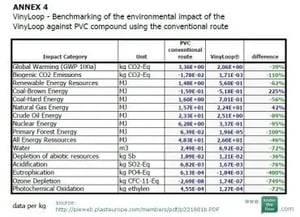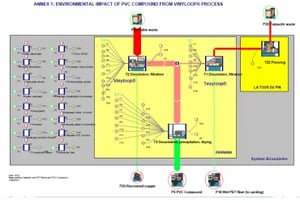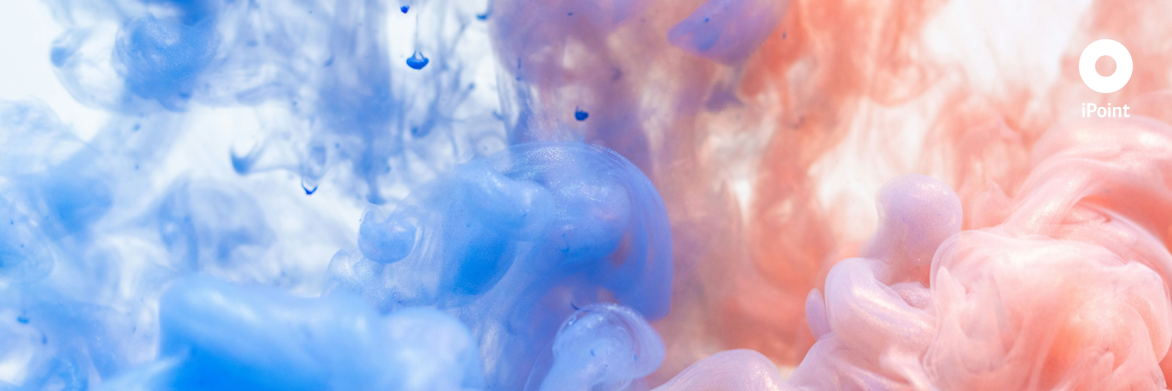Recycling – it’s the magic word when the ill-informed think “environmental friendliness”. “Recyclable” – the number one green term that doesn’t mean a thing. Of course, as long as you put enough energy into a process, you can recycle virtually anything. The issue, the uncomfortable drawback that sits behind the pleasant sheen, the little itch you feel when you start thinking things through, is the inevitable truth of energy input. Yes, producing stuff requires energy. And yes, recycling, too, really does require energy! Material savings are easy to outline, but the key to a true environmental assessment is a clear picture of all the energy used and transformed in every single process that the recycling involves. Every step you take to separate or purify a material requires energy. Not to forget that collecting and separating stuff uses energy, too. Now, in order to find a winner in the race between “recycling the old” on the one hand, and “incinerating the old/producing the new” on the other, we have a great raft of things to keep in mind.
How does PVC recycling perform, compared to new PVC production?
Let’s take electric cables as an example. Most cables consist of a copper wire covered in PVC insulation. Recycling the copper definitely makes sense, since we’re dealing with a (naturally) non-renewable metal whose exploitation incurs serious environmental effects. Mining resides among the most energy-intensive ways of winning raw materials, so metal recycling will clearly win over metal mining. However, production of a PVC compound, the material cable insulation is made of, does not involve mining. The most common fossil energy, oil, is extracted and chemically transformed into PVC. Collecting old cables for recycling, then washing and melting them also requires energy, since trucks and industrial plants usually run on fossil fuel. So how do the two compare? How does PVC recycling perform, compared to new PVC production?
Life Cycle Assessment conducted to get to the bottom of the matter
In order to get to the bottom of the matter, Europe’s biggest PVC producer Solvay, who runs a PVC recycling plant in the Italian City of Ferrara, conducted a detailed life cycle assessment (LCA). In a recycling process they call VinyLoop, two materials are reclaimed: PVC grains, mainly from cable waste, and Tarpaulin waste, a PET textile coated with PVC. The PVC recovered during the process is a secondary compound comparable in a quality to primary (virgin) PVC compound. Material-wise, the plant is pretty efficient: out of 1.15 kg cable waste, 0.9 kg PVC compound is recovered, and for each 0.29 kg tarpaulin waste, 0.1kg new raw fibers are captured. But what about the overall environmental performance?
LCA software Umberto helped to model complex recycling steps
Well, the recycling steps are complex, but the software used has modeled them all. First of all, the waste goes into a chemical reactor, where methyl ethyl ketones dissolve the PVC. The remaining (insoluble) elements get filtered out. To avoid any impurities, a second process called decantation uses a centrifuge to separate all traces of unwanted material. The fate that awaits this filtered material depends on its desirability – whereas the copper bits are also recycled, all the pitiful rest goes to the incinerator (yes, that means it gets burned).
Now, the thick mass of solvent and PVC needs to be separated in order to be useful. We do this by injecting steam. The solvent evaporates and is reused, whereas the PVC precipitates as granules. This is where the name of this process comes from – precipitation. All that’s left is drying and packaging.
The method Solvay chose for the life cycle assessment is to follow the ISO 14040/14044 norm using the software Umberto. In order to correctly reflect all possible environmental effects of chemical processes, like PVC recycling, many different impact categories are needed. In this case, light was shed on global warming, water and resource use, the potential for acidification and eutrophication, stratospheric ozone depletion and photochemical oxidation.
Recycling results in a lower global warming potential
And – believe it or not – the recycling uses only half the primary energy (54%) and emits only 39% of the greenhouse gases! Hence, it results in a 39% lower global warming potential. And these figures assume that the waste incinerator is equipped with energy recovery technology. This is important for the non-recycling case: If there is no recycling, burning the PVC can happen in two ways, with or without out regaining the waste’s energy. Without, recycling would compare even better. How much better? Umberto calculates everything. Just compare the following two tables. Speaking of which – at the bottom of the article, you’ll find a link to a complete process map that visualizes the PVC recycling process and all of its components.

The environmental performance of PVC recycling (VinyLoop, right blue column) is a lot better than new production in most of the impact categories. However, since Italy’s energy mix is coal- and natural gas-dominated, and recycling uses energy, these two score worse. Taken from the VinyLoop LCA study PDF.

Find the detailed recycling process map by Umberto on page 15 of the study’s PDF.
Article image by Moritz Buehner combines the Umberto VinyLoop process map with a background image by lovestromp
![]()





